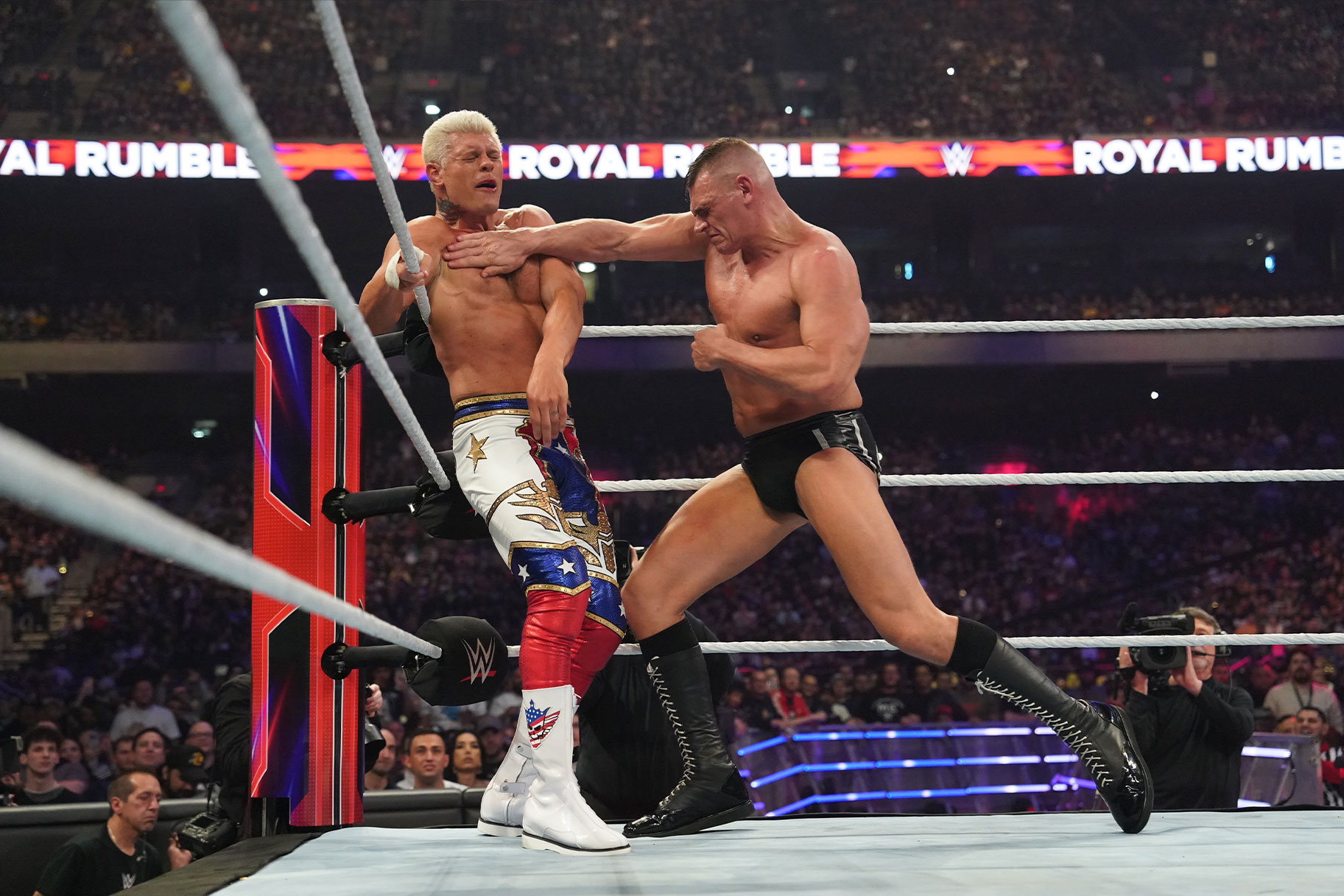Here’s Why Blood Is Banned In WWE
We answer one of the most often-asked questions from the WWE Universe!

Make no mistake about it, there are a lot of differences in WWE programming from different eras. Nobody will confuse a match from the '80s with a match from today’s era — the presentation, graphics, video quality, camerawork, and match styles are completely different. But when comparing matches and television segments from the early-to-mid-2000s and today, you’d be hard-pressed to spot major differences. For the most part, the production style of WWE programming hasn’t changed for the better part of 20 years.
RELATED: 30 Years Of RAW: The Definitive Ranking Of Every Monday Night RAW Set In History
But we’d be lying if we said there aren’t any huge differences between how WWE television is produced now and how it was presented 20 years ago — there’s one aspect that has changed nearly completely:
Blood.
Whether you’re actively aware of it or not, blood has been a crucial component in some of the greatest matches in WWE history. Matches like Hart/Austin at WrestleMania 13, Undertaker/Michaels in the first Hell in the Cell, and Triple H/Mankind at Royal Rumble 2000 would be remembered quite differently if blood was removed from the equation, don’t you think? (Try imagining Steve Austin passing out from the pain of Bret Hart’s Sharpshooter without blood streaming down his face, giving WWE one of its most iconic images of all time.)
Although blood was featured prominently in the past, that isn’t the case now. Blood is a rare occasion on WWE television now, and fans who grew up watching wrestling in the '90s are sure to notice the lack of it if they were to tune in now.
Blood just simply ... went away sometime in 2008.
So, Why Isn’t There Blood In WWE Anymore?
Let’s turn back time and look at the 2008 edition of The Great American Bash pay-per-view event.
Taking place on July 20, the event was headlined by Triple H defending the WWE Championship against Edge, but a match between Shawn Michaels and Chris Jericho wound up stealing the show — but not for a reason you’d expect from two of the best wrestlers ever.
To put it simply: Michaels bled during the match — a lot. What was supposed to be a small cut above his eye to make the match feel more intense (he and Jericho were embroiled in an extremely personal and bitter feud at the time) turned into ... well, what looked like buckets of blood coming out of the face of HBK for the majority of the match. It wasn’t the first time Shawn Michaels bled during a match, but it was one of the most gory and unsettling instances.
When the match was over and the ring mat was once again so stained with Shawn Michaels’ blood that the ring canvas had to be changed before the event could continue, Vince McMahon had a revelation: enough was enough.
WWE Switches To TV-PG Rated Programming
Just two days later, on July 22, 2008, Vince McMahon and WWE made the decision: A situation like Shawn Michaels bleeding too much would not be a problem anymore since they would be making the switch from TV-14 to TV-PG rated programming.
In an instant, everything changed. John Cena’s finishing move, originally called the “FU” as a shot at Brock Lesnar’s F5 finisher, underwent a name change to the decidedly more family-friendly “Attitude Adjustment.” Risque stipulation matches involving female Superstars wrestling in lingerie and/or in tubs of pudding were no longer featured. Even event names were changed to avoid negative connotations (WWE’s Extreme Rules event was originally called “One Night Stand,” for example. Even on-camera reunions of D-Generation seemingly had less references to their infamous “Suck it!” catchphrase.)
Oh, and wrestlers were not allowed to bleed during matches anymore, either.
Internally, this was a two-pronged strategy. First and foremost, the Superstars’ health and safety was prioritized. But the second aspect of the shift to TV-PG had everything to do with marketing WWE to a wider audience. WWE found itself with major interest from mainstream advertisers and family-friendly companies like the iconic toy brand Mattel. If WWE wanted to grow, it needed to expand its reach — and that meant catering to children and families just as much as it did to die-hard fans who grew up watching WWE and saw it evolve through the Attitude Era.
While the progression was considered primarily a corporate maneuver to appease advertisers and potential brand partners, it had practical undertones as well: The WWE was evolving. A different approach to the television product would only spur innovation and advances in the genre that WWE pioneered.
Reactions to this shift in presentation ranged from anger to understanding. Some fans called it a homogenized version of the WWE it grew up watching, others called it lame, and others (parents, mostly) applauded this iteration of WWE, which kept the engaging storylines and superb in-ring action and cut out the gratuitous violence and sex.
Despite pushback from a very vocal online minority, the changes stuck — and WWE has embraced PG-rated programming ever since that fateful day in July.
Will Fans Ever See Blood In WWE Again?
So with blood banned since 2008, one question remains: Will we ever see wrestlers bleeding on a regular basis again? Triple H was asked this very question during an interview with The Ringer’s David Shoemaker in late 2022 and answered it directly and honestly:
“The world has changed,” Triple H said. “The world has evolved. I don’t think it’s necessary. There is still blood in WWE, but there are medical personnel to check on wrestlers if there is an inadvertent cut. If we have talent that gets [cut open], usually you’ll see them roll out and they’ll get looked at to make sure that there’s nothing dangerous. I’m just of the opinion right now, given the state of the world and the pandemic, and at the end of the day, what we do is dangerous enough without intentionally making it more dangerous. Yes, we did [incorporate blood] for a long period of time, but we’ve changed that practice — and it’s irresponsible to go back.”
(Translation: no.)
WWE is an entirely different beast than it was decades ago, and if fans want to see WWE Superstars bleeding during matches, well ... that’s what Peacock is for. But in 2023, responsibility and safety is paramount. Even if WWE decides to revert back to TV-14 programming in the future, fans shouldn’t expect to see blood in matches ever again.
And now you know why.
Catch up on all things WWE Universe on Peacock.













